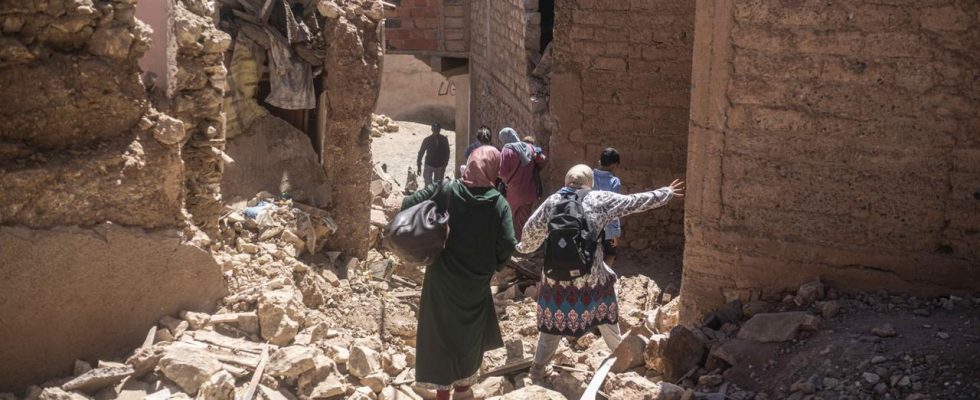More than 1,300 deaths have been reported after the severe earthquake in Morocco. When the quake began, people fled their homes in panic and buildings were destroyed. Survivors report how they experienced the night.
On the night of Friday to Saturday, shortly after 11 p.m. local time in Marrakesh. Hotels, restaurants and cafes are well attended. Many people enjoy the evening, the start of the weekend. But suddenly lamps swing back and forth, hit the walls, and the earth shakes.
Many people first have to understand what is happening – like Moulay Hafid Mouddan. He had just left the restaurant with his wife to stroll through the streets of the desert city, as he told the French news agency AFP: “After our dinner, I went out into the street with my wife to take a little walk, and shortly afterwards we felt a tremor under our feet. My wife thought it was a helicopter or something.” There was a tremor and suddenly people were running through the streets in all directions.
According to earthquake monitoring, an earthquake measuring 6.8 to 6.9 on the Richter scale shook the region. Its epicenter lies between the tourist hotspots of Marrakech inland and Agadir on the Atlantic coast. But the tremors can be felt far beyond, even in the capital Rabat, around 500 kilometers away.
The number of victims increases as the day progresses
In Marrakesh, people are fleeing their often very old houses in panic. Parts of the famous red wall around the old town are collapsing, rubble litters the streets, and the minaret of a historic mosque is damaged.
The famous Djema El-Fna square, where musicians, traders and jugglers usually entertain visitors in the evenings, is becoming a place for many to sleep in the open air – for fear of aftershocks, says resident Faisal Baddour at night in Marrakesh. “The strength and intensity of this earthquake could be felt in our building, it was shaken a good three times. People ran straight into the street in total panic.” It was as if a train had rushed past their houses.
After there was initially talk of 300 deaths on Saturday morning, the numbers continued to rise as the day went on. As the government recently announced, at least 1,305 people have died. In addition, more than 1,832 injuries were counted. The rural areas between Marrakesh and Agadir appear to be hardest hit. Helpers and rescue workers can’t get to everything quickly. The situation is confusing. People are calling for help online, saying that their relatives are still buried under rubble.
European Union promises help
In the village of Amizmiz, 60 kilometers south of Marrakesh, a makeshift tent stands on a field of rubble. Actually just wooden poles with a tarpaulin under which around 30 people – mostly women and children – hide from the sun.
A woman stands next to it, around her there are houses with massive cracks, some of which have collapsed. She describes the situation to a Moroccan online magazine like this: The children are now homeless, the people have no place to live, the houses have collapsed. “The population here is poor, look around,” she says. “Everything is broken, people are already clearing out their houses and there are also human losses.”
A neighboring town was hit even worse than hers, she says; there were many dead and injured there: “They’re still pulling people out from under the rubble.” There is another place that is completely destroyed. There are people who have nothing to eat. There are poor people who are very affected. “We ask God and our King to help us and to have mercy on us.”
The Moroccan government has not yet asked for international support. But the European Union has already promised help.

